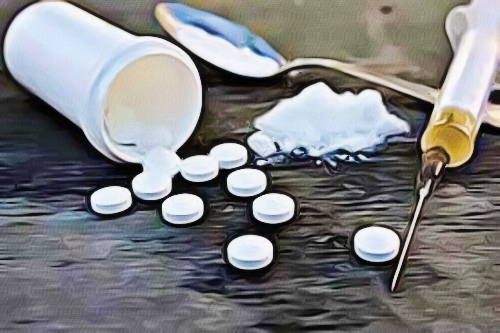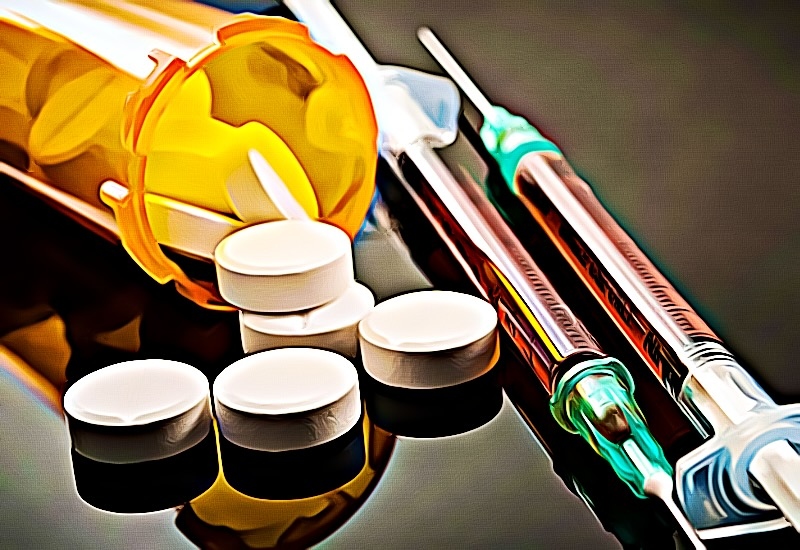The United States of America undoubtedly has an opiate problem, as many people of different age demographics are getting into the scene of addiction. These damaging substances are derivatives of the opium plant, processed by the body to receive various effects. Opiates are not the same as opioids, as the former entails drugs like heroin directly derived from the opium plant. Opioids are the medical and synthetic derivative of opiates, just as addicting as their counterparts.
Addiction centers are always struggling to deal with heavy users of opiates, as it is a highly addictive substance that usually requires working with a drug rehab to solve. While opiates are already a problem, people tend to abuse prescription opioids due to their legality on the market. These dangerous drugs require addiction treatment immediately to ensure that the effects on the body don’t become grave, as substances like heroin are incredibly potent. If you’re wondering about the lasting effects of opiates, here’s how long they stay in a user’s system:
How Long Do Opiates Stay in Your System?
Like any other substance, the lasting effects of opiates on a person’s body will always vary from person to person. Many factors play into how long the opiates stay in a person’s system, which depends significantly on the physical makeup of a user and the type of opiate consumed.
Compared to substances like marijuana, opiates have short-lived effects on the human body. Things like heroin leave the human body quickly but have a lasting high of up to several hours. Depending on how the drug was consumed, these can have different half-lives and a more potent high. Heroin can be injected, smoked, or snorted, with the injectable form bringing the drug directly into the bloodstream and causing a more substantial effect on the body. Taking heroin in any of these three forms will ensure a quick hit and a lasting high, while pill opiates might take more time to acquire the effect because of the digestive system’s processing.
Other physical factors that affect how long opiates stay in a person’s system is their metabolic rate, weight, body fat percentage, organ health, age, usage levels, and drug quality. A person’s metabolic rate is responsible for processing the substances they take, which means that a faster pace will help push out the drug quicker.
A user’s weight will determine how long the drugs stay in their bodies, but the muscle and fat percentage makes substances leave the body faster. People with more fat have a slower metabolism, which stores the substances longer. Since drugs are pushed out by urine in most cases, liver and kidney health plays an integral role in clearing the body. Older individuals might also have higher substance retention rates because of slower metabolisms.
Lastly, people who use drugs with a purer composition and more regularly will have better retention of substances than non-regular users. Drug addiction will often retain the effects long enough to be seen on a drug test because of these chemicals’ regular use.
How Long Do Opiates Stay In Urine, Hair, Blood, and Saliva?
Urine tests are the most common and cost-effective test. They are cheap enough to administer on a large scale, which is why they’re used for high school or organizational drug testing. How long opiates stay in urine depends on the kind of substance taken, including the factors listed above. In heroin’s case, it lasts around a week in a person’s urine, which will be easily detected by the test.
Hair tests are the most potent and more expensive tests to run. They can detect opiate use up to months after the last experience with the drug. These tests are typically used for some jobs that require strenuous candidate testing, as these cannot be faked or tricked into having different results.
Blood tests are less common because of how expensive and invasive they are. However, these tests only really see drugs quickly because of how the human body naturally cleanses the blood. Some opiates only last up to 12 hours, which won’t be discovered by a blood drug test after that.
Saliva tests are less invasive and less accurate than other tests, as there can be many factors that change the results. These tests also have a smaller window to test, making it difficult to catch drugs in a person’s system.
List of Popular Opiates
There is a long list of opiates and their street names, either illegally obtained or prescribed by a medical professional. Abusing these come from their sedative and painkiller effects, which feel good when used in large quantities. In terms of medical history, opiates were prescribed when patients had adverse reactions to medicines, such as allergies or instabilities from genetics. Here’s a list of the opiates you can find today:
- Codeine
- Darvocet
- Darvon
- Demerol
- Dilaudid
- Duragesic
- Fentanyl
- Heroin
- Hydrocodone
- Lorcet
- Lortab
- Methadone
- Morphine
- Norco
- Oxycodone
- Oxycontin
- Percocet
- Roxicodone
- Suboxone
- Subutex
- Tramadol
- Ultram
- Vicodin
- Zydone

These substances are narcotics with lethal effects when abused, as they overload the system and are typically mixed with other chemicals. America has a large problem with opiates because of how easy they are to get and how drug addiction is so prominent with their chemical composition. Undoubtedly one of the most lethal ones is heroin, as this is usually injected with shared needles, which can cause infections that can lead to death.
Street names for opiates include black tar, cash, cough syrup, dope, liquid crack, morph, smack, T 3, and Vicos. Around 115 people in America die each day from opiate addiction, and there are over two million users globally that abuse the substances.
Drug Testing for Opiates
If you’ve taken opiates recently and are due for a drug test either for work or at drug rehab, the first thing to do is to disclose any prescribed medications you’re taking. The reason for this is that even if the opiates you’ve taken have been long gone, your medications can have opiate derivatives in them, which will trigger the test and list you as a positive user. False-positive results can come from antibiotics and drugs that treat bipolar disorder and other mental illnesses.
Additionally, your diet will also play a role in your drug test results. Poppy seed-containing foods and desserts might trigger a false-positive result, which should be avoided at all costs. Even if you disclose what you ate before the test, this might not be considered as it isn’t always possible to trace if something came from food or an actual substance.
Addiction centers testing patients with suspected drug addiction might test their urine sample before running the primary test. They’ll likely check for bleach, water, and other chemicals that have been added to the mix to trick the test. Many people who have gone through drug tests in high school might remember using someone else’s urine, which isn’t always possible in places like corporate job applications or offices.
In general, urine tests must have a specific potency in a person’s urine. Avoid drinking too much water before the test, as some places might reject the sample because of dilution. Too much water in the selection might render the results differently, which will label the test as invalid or adulterated.
Saliva tests also require special instructions, such as not eating or drinking anything 10 to 15 minutes before the sample collection. The containers and staff conducting the tests will likely tell you the full instructions on the day of the test.
Conclusion
Opiates are a problematic drug because of how destructive they can be to the organs when a user cannot get enough. Some opiates like heroin are invasive and can lead to fatalities because of dirty needles. Additionally, various tests can detect opiates, which means that using them is never a good idea if you plan to apply for a high-end job position or work towards a brighter future. Avoid opiates as much as possible to ensure a better life overall.
Sources:
https://www.drugabuse.gov/drug-topics/opioids/opioid-overdose-crisis

